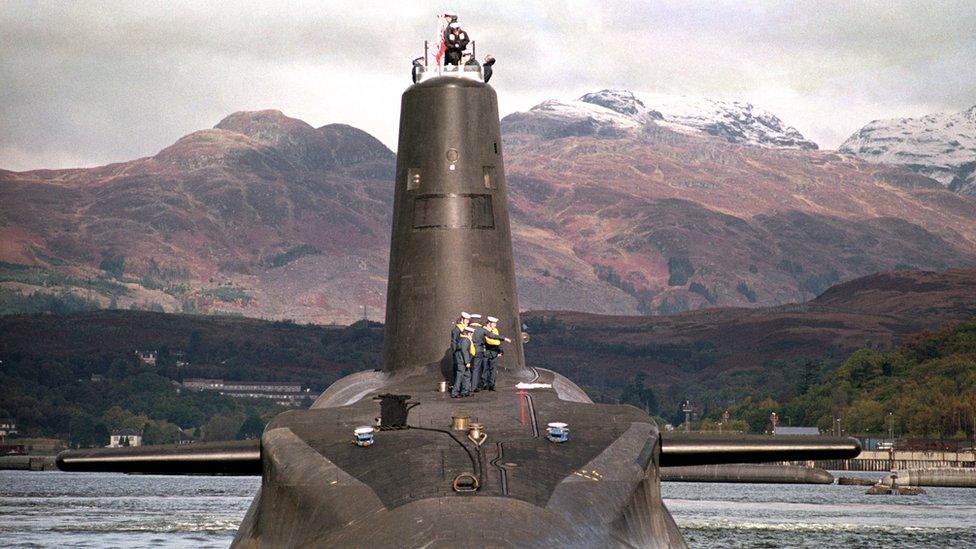UK defence spending 'concerns' US Army chief Raymond Odierno
- Published
- comments
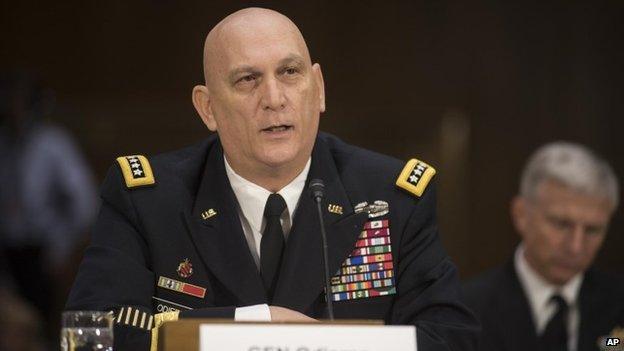
General Raymond Odierno says some British army brigades may have to work inside US ones in future
The head of the US Army says he is "very concerned" about the impact of spending cuts on the UK's armed forces.
Chief of Staff General Raymond Odierno voiced his reservations about the falling proportion of the UK's national wealth being spent on the military.
He warned it could see British units operating within US ranks, rather than divisions working alongside each other.
The Ministry of Defence said the government was committed to spending 2% of GDP on defence.
Ministers are under pressure from Conservative MPs and the military to commit to meeting Nato's target of spending at least that figure on defence beyond 2016.
Britain currently just meets the 2% target, but the government is committed only to continuing that until the end of this Parliament.
'Same goals'
General Odierno told The Daily Telegraph: , external"I would be lying to you if I did not say that I am very concerned about the GDP investment in the UK.
"In the past we would have a British army division working alongside an American division.
"Now it might be a British brigade inside an American division, or even a British battalion inside an American brigade.
"We have to adjust our programme to make sure we are all able to see that we can still work together."
He described Britain's role as a key US ally as "about having a partner that has very close values and the same goals as we do".
"As we look at threats around the world, these are global issues and we need to have multinational solutions," he said.
"They are concerning to everyone. We all need to be able to invest and work together to solve these problems."
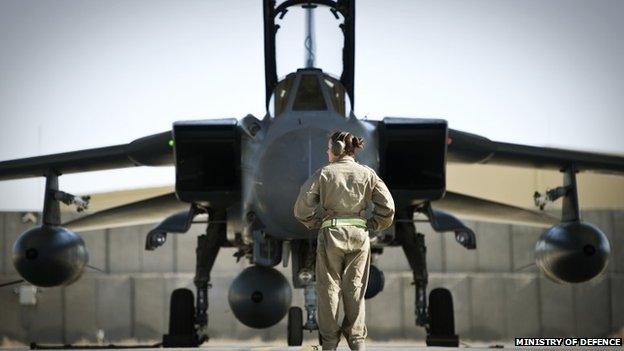
Cuts are being made to all of the UK's armed forces, including the RAF
The British army is undergoing a 20% reduction in regular troop numbers, from 102,000 in 2010 to 82,000 in 2020.
This is to be accompanied by a rise in the number of reservists, from 24,000 to 30,000.
The Royal Navy and the RAF are both preparing to lose 5,000 regulars and gain 500 reservists over the same period.
Nato has already set a target that member states should each spend a minimum of 2% of their national income - or GDP - on defence.
Watered down
Few countries have met this target so at the Nato summit last September, the commitment was watered down, with the less ambitious goal that those countries that were not meeting the target should "halt any decline in defence expenditure" .
Research by the European Leadership Network, external suggests that in 2015 only one of the 14 nations examined - Estonia - will meet the 2% target.
While expenditure will increase in Poland, Latvia, Lithuania, the Netherlands, Norway and Romania, none of these will meet the target.
Germany, Italy, Canada, Hungary and Bulgaria will cut their defence spending alongside the UK, the network suggests.
Examining current expenditure plans, the ELN concludes that defence spending in the UK will fall from its current level of 2.07% of GDP (£36.4bn) to 1.88% (£35.5bn) in 2015-16.
Former Defence Secretary Liam Fox said Tory MPs would find it "hard to swallow" if defence spending fell below the 2% threshold while a pledge to spend 0.7% of GDP on foreign aid was kept by the government.
'Manifesto commitments'
Former head of the Army General Sir Peter Wall called for the major parties to make general election manifesto commitments on defence spending.
Conservative MP and former Army officer Col Bob Stewart warned that making cuts to defence spending would be "barmy" and said current armed forces were already "reducing day by day".
"We should actually look at what we require - not 2% - we should look at what we require to defend our country," the defence select committee member said.
A Ministry of Defence spokesman said the UK had the second largest defence budget in Nato and the largest in Europe.
"Decisions on spending after the financial year 2015/16 will be determined in the next spending review," he added.
"Over the next decade we are committed to spending £163bn on equipment and equipment support to keep Britain safe.
"That includes new strike fighters, more surveillance aircraft, hunter killer submarines, two aircraft carriers, and the most advanced armoured vehicles."
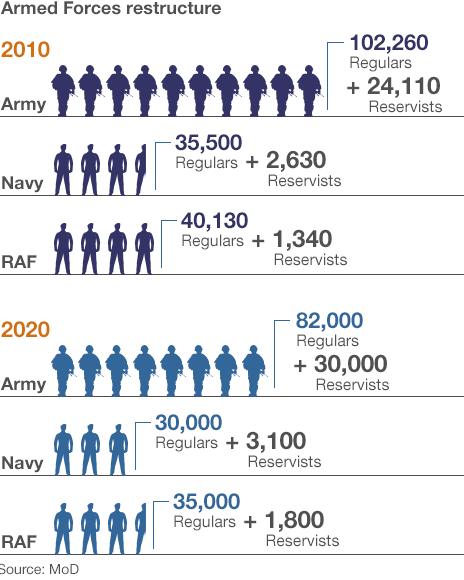
- Published26 February 2015
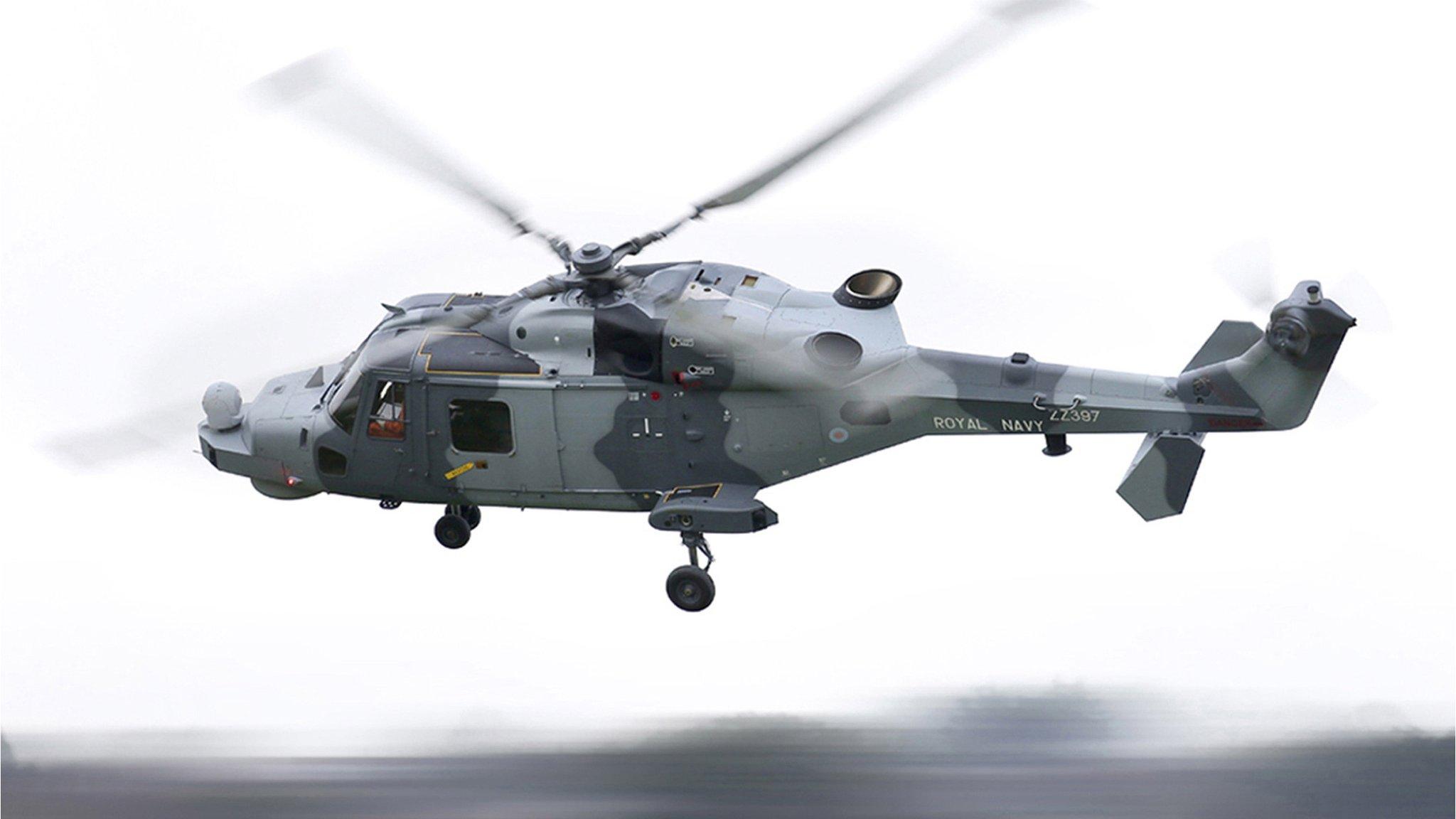
- Published24 February 2014
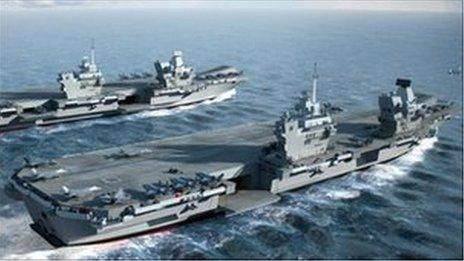
- Published27 March 2014
